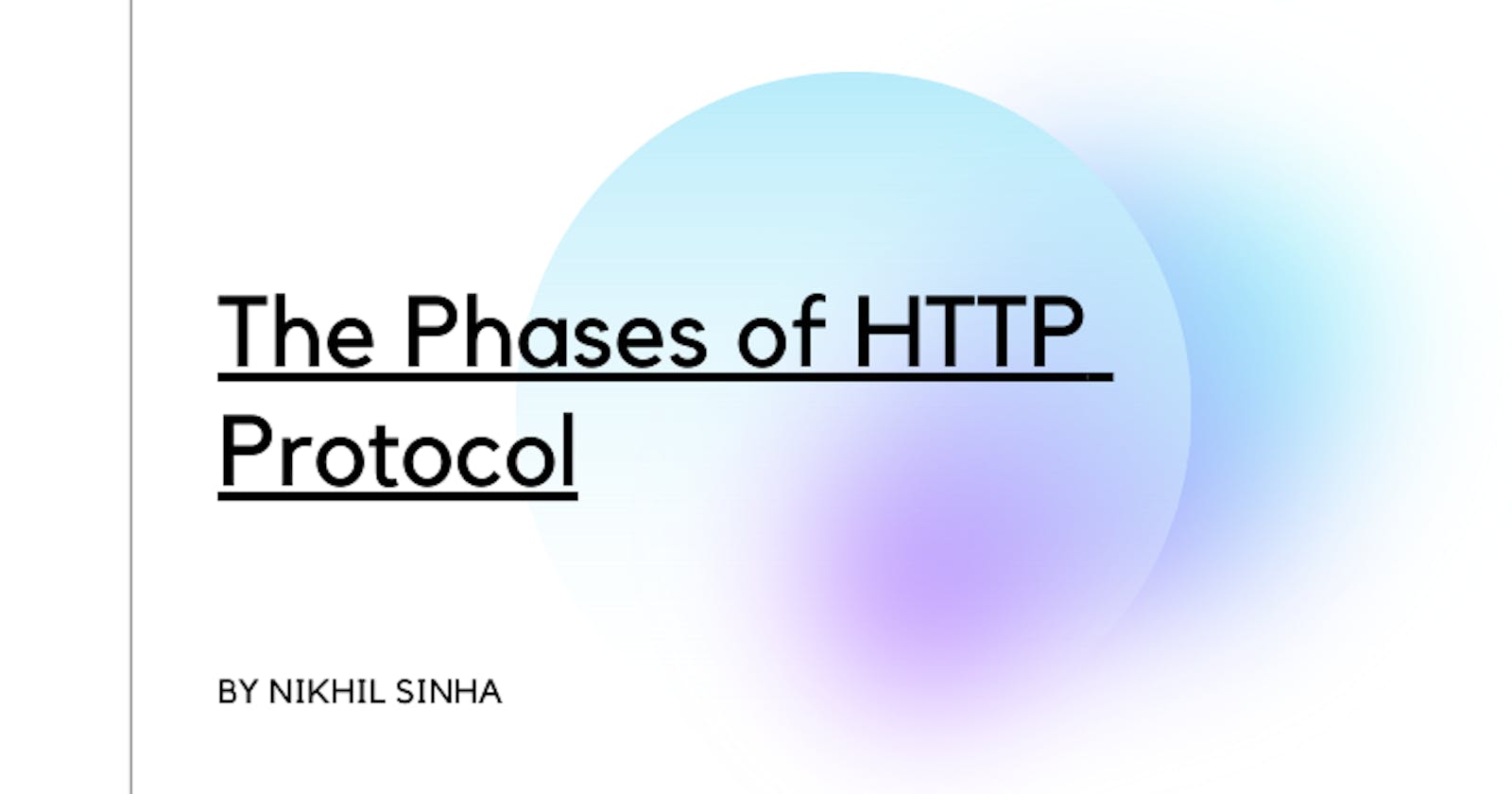Introduction
When we browse the internet, we often come across the acronym "HTTP." But have you ever wondered what it really means? HTTP, short for Hypertext Transfer Protocol, is the foundation of communication between web browsers and servers. In this blog, we will delve into the various phases of the HTTP protocol, exploring how information travels between clients and servers on the web.
There are 5 phases of the HTTP protocol
Connection Establishment
Request Phase
Server Processing
Response Phase
Connection Termination
Connection Establishment
Before any communication can occur, a connection must be established between the client (your web browser) and the server. This connection, typically using the TCP protocol, allows for reliable data transmission. It sets the stage for the exchange of HTTP messages between the two parties.
For those who don't know about TCP, TCP is a reliable and connection-oriented protocol that ensures the accurate and orderly delivery of data between devices. With its flow control, congestion control, and full-duplex capabilities, TCP has become the de facto protocol for most network communication, enabling the seamless transfer of data over IP networks.
Request Phase
Once the connection is established, the client sends an HTTP request to the server. This request includes several important components. First, there is the request method, which indicates the desired action to be performed on the server's resource (e.g., retrieving, updating, or deleting). Then, there is the request URI, which specifies the location of the desired resource. Additionally, the client includes the HTTP version, headers (extra information about the request), and, in some cases, a request body containing data to be sent to the server.
Server Processing
Upon receiving the client's request, the server begins processing it. This involves performing the requested action on the specified resource. For example, if the client requested a web page, the server would retrieve the appropriate file and prepare it for the response.
Response Phase
Once the server has processed the request, it generates an HTTP response to send back to the client. The response consists of several key elements. The status line contains the HTTP version, a status code indicating the outcome of the request (e.g., success or failure), and a brief description of the status. Headers accompany the status line and provide additional information about the response, such as content type, caching directives, and server details. Lastly, the response body carries the actual data or resource requested by the client, such as HTML content, images, or JSON data.
Connection Termination
After the response is transmitted to the client, the server closes the TCP connection. This signifies the end of the communication for that specific request-response cycle. However, in some cases, the connection may be kept alive for subsequent requests to optimize performance.
Conclusion
Understanding the phases of the HTTP protocol gives us insight into how information flows between clients and servers on the web. From establishing a connection to processing requests and generating responses, each phase plays a crucial role in delivering the content we seek. With this knowledge, we can appreciate the intricate mechanics behind the websites and web applications we interact with daily. Next time you browse the web, remember the HTTP protocol silently working behind the scenes to make it all possible.
Before we end here...
Thanks for reading it. I hope it was insightful. If you liked the article, please post likes and comment down if i missed something or you want to add something or any suggestion.
